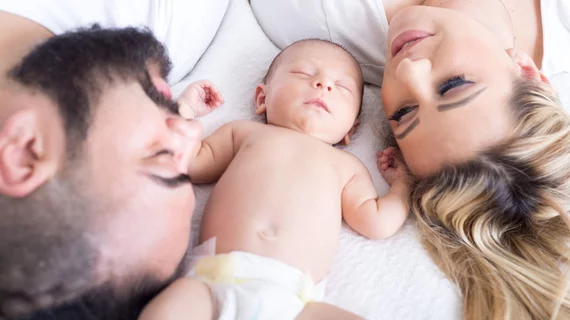Many more radiology residency programs offer paternal leave, whether paid or unpaid, to today’s trainee dads than was the case a quarter-century ago. Meanwhile the proportion of programs with similar policies for radiologist moms has remained relatively considerate and constant.
However, in both cases, a lack of consistency in policies around the country in 2020 invites the question: Do residency program directors need national guidelines on parental leave?
After surveying the field in 2019, three Johns Hopkins radiology researchers are suggesting the possibility deserves consideration. Their findings are running online in JACR.
Doris Lin, MD, PhD, and colleagues received 74 responses from the 222 residency program directors (PDs) to whom they sent an electronic survey. The questions covered attitudes toward parental leave as well as what sorts of policies were actually in place in each respondent’s program.
Of the 74 responding PDs, 80% said they had a paternal leave policy (88% explicitly written and 75% paid). That was nearly double the 42% of programs offering fathers a baby break in the mid-’90s, according to a survey conducted at the time by the American Association for Women Radiologists.
As for the mothers, some 88% told the Johns Hopkins researchers they had a policy as of 2019 (88% written and 77% paid). This was one percentage point higher than what the 1990s AAWR surveyors found.
Other key findings from the new research:
- The average length of maternal and paternal leaves was 7.4 ± 3.9 and 3.7 ± 3.7 weeks, respectively.
- Parental leaves were allocated at least every other year in over 70% of programs.
- Approximately 60% of the PDs required residents to make up call rotations for parental leaves.
- About 90% of responsive programs adjusted angiography and fluoroscopy rotations for trainees throughout the pregnancy or according to the trainee’s request.
- Policies did not generally address issues of breastfeeding and nontraditional parenthood.
Radiology compared very favorably with other specialties in providing maternal leave policies. Examples the authors cite for comparison include urology (42%) and general surgery (67%). The top specialty, pediatrics, nudged out radiology with a 90% offering rate.
In their discussion, Lin et al. point out that radiology trainees who want to have children are up against the clock, as residency typically spans reproductive ages. Additionally, they note, training programs entail intense schedules that stress residents both physically and psychologically.
In light of these realities, “it is vital for the training programs to develop written parental leave policies to address and reconcile the competing priorities of pregnancy or parenthood and training demands during these years,” they write.
The authors further comment that the “lack of national uniformity in radiology residency programs’ policies concerning parental leave opens the possibility of national guidance in addressing the issue.”

